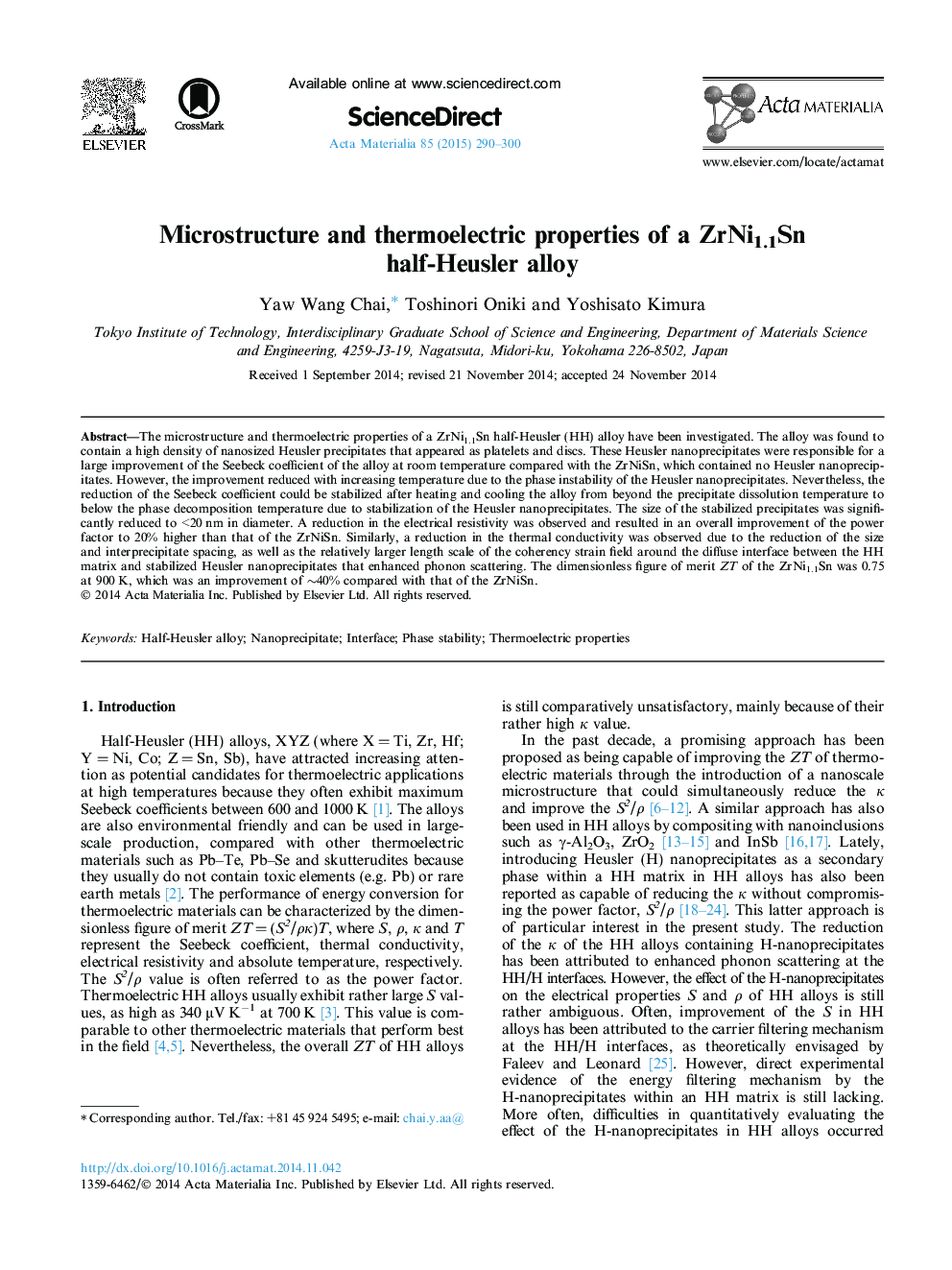| Article ID | Journal | Published Year | Pages | File Type |
|---|---|---|---|---|
| 7880843 | Acta Materialia | 2015 | 11 Pages |
Abstract
The microstructure and thermoelectric properties of a ZrNi1.1Sn half-Heusler (HH) alloy have been investigated. The alloy was found to contain a high density of nanosized Heusler precipitates that appeared as platelets and discs. These Heusler nanoprecipitates were responsible for a large improvement of the Seebeck coefficient of the alloy at room temperature compared with the ZrNiSn, which contained no Heusler nanoprecipitates. However, the improvement reduced with increasing temperature due to the phase instability of the Heusler nanoprecipitates. Nevertheless, the reduction of the Seebeck coefficient could be stabilized after heating and cooling the alloy from beyond the precipitate dissolution temperature to below the phase decomposition temperature due to stabilization of the Heusler nanoprecipitates. The size of the stabilized precipitates was significantly reduced to <20Â nm in diameter. A reduction in the electrical resistivity was observed and resulted in an overall improvement of the power factor to 20% higher than that of the ZrNiSn. Similarly, a reduction in the thermal conductivity was observed due to the reduction of the size and interprecipitate spacing, as well as the relatively larger length scale of the coherency strain field around the diffuse interface between the HH matrix and stabilized Heusler nanoprecipitates that enhanced phonon scattering. The dimensionless figure of merit ZT of the ZrNi1.1Sn was 0.75 at 900Â K, which was an improvement of â¼40% compared with that of the ZrNiSn.
Related Topics
Physical Sciences and Engineering
Materials Science
Ceramics and Composites
Authors
Yaw Wang Chai, Toshinori Oniki, Yoshisato Kimura,
